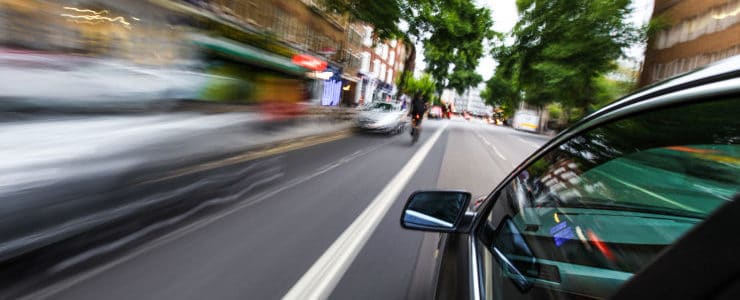
Although there are specific traffic statutes in Nevada that dictate that drivers need to pass (or more commonly know as overtake) cars on the left side this particular NRS provides the reasons when that action is prohibited.
Nevada Revised Statute 484B.217 provides five specific exceptions when a driver is not allowed to make a left-hand turn or overtake another vehicle on the left hand side.
If you are ever caught and ticketed for violating NRS 484B.217, then you should try to get legal assistance immediately. Dealing with any kind of traffic ticket and the court system is an annoying process for most people because they simply are not experienced with the process.
Waiting in lines, understanding what you need to do, and trying to communicate with customer service people in government are not easy and very time-consuming. The drain on time is essentially a monetary cost to the person that got ticketed.
Time is money and no doubt when you get a ticket, an excess amount of it will be used to navigate the court system. Having legal assistance will significantly help this process and allow the cited driver to let the attorneys work on their behalf.
There are lots of choices out there for legal help for traffic tickets but you should contact Ticket Busters. We have been serving the residents of southern Nevada for decades and there is no better testimonial than that. We take great pride in the longevity we have had in serving our community and know that we can help you just the same. Our office can be reached in multiple fashions including email, telephone calls or drop-ins.
Our office is conveniently located in downtown Las Vegas and you can make an appointment or simply stop by during our normal business hours. We will get you set up with one of our professional staff members who will assist you with all aspects of your traffic case.
Obey Traffic Control Devices
Getting back to NRS 484B.217, the first example of a reason to not pass on the left reads as follows:
1. The Department of Transportation with respect to highways constructed under the authority of chapter 408 of NRS, and local authorities with respect to highways under their jurisdiction, may determine those zones of highways where overtaking and passing to the left or making a left-hand turn would be hazardous, and may by the erection of official traffic-control devices indicate such zones. When such devices are in place and clearly visible to an ordinarily observant person, every driver of a vehicle shall obey the directions thereof.
Depending on the situation and where you are specifically driving in Nevada may depend on who has jurisdiction in that area. Regardless of which authority is managing the roadway, they have the authorization to determine what may or may not be hazardous when drivers are overtaking another vehicle on the left.
Regardless of the situation, when there are traffic-controlled devices such as cones, metal reflectors, and orange barrels, it is most likely they will be considered dangerous and a driver should not pass another car when these are prevalent and disrupt the usual lanes of traffic. In any case, when there are these types of traffic objects that have been installed by authorized transportation officials, all those operating a vehicle need to adhere to their directions.
Don’t Cross Solid Lines
The second exception in this NRS deals with the lines within a street or roadway that contains traffic obstructions:
2. Except as otherwise provided in subsections 3 and 4, a driver shall not drive on the left side of the highway within such zone or drive across or on the left side of any pavement striping designed to mark such zone throughout its length.
It is obvious that this section of the statute was written by lawmakers as it can be pretty difficult to decipher for the average reader. Basically, it states that drivers “shouldn’t cross a solid line to pass someone”.
The section explains what drivers need to do if they find themselves in a patch of roadway that has cones or other objects installed on them. The statute provides the directive to drivers to simply not cross the line or pavement striping on the left hand side when they find themselves driving in a zone of roadway that is littered with traffic objects.
Exception #1: Turn Signal and No Impediment to Traffic
There is an exception and that is what the third section details to drivers:
3. A driver may drive across a pavement striping marking such zone to an adjoining highway if the driver has first given the appropriate turn signal and there will be no impediment to oncoming or following traffic.
When a driver in Nevada does find themselves cruising along a road with orange barrels, metal reflectors and other types of traffic obstructions they are able to cross that solid pavement stripe referenced above as long as the operator of the vehicle uses his turn signal in the appropriate manner. Along with turning on the turn signal, the driver must also ensure that the oncoming traffic will not be impeded by the pass. It is the responsibility of the passing driver to make sure that any oncoming traffic is far enough away to make a safe overtake of another automobile.
Exception #2: Appropriate Distance for Turn Signal
The next section is a follow up from number three and provides more detail in regard to the rules of operating a turn signal in the state of Nevada. Instead of hashing out all of the rules again, the section simply references the other Nevada Revised Statute that specifically pertains to that action.
4. Except where otherwise provided, a driver may drive across a pavement striping marking such a zone to make a left-hand turn if the driver has first given the appropriate turn signal in compliance with NRS 484B.413, if it is safe and if it would not be an impediment to oncoming or following traffic.
That is NRS 484B.213 and provides the details regarding how far away a driver needs to be before administering their turn signal.
Spoiler alert: the rules are that a driver must put on his turn signal one hundred feet before making the turn when in a residential or business district. The rule is three hundred feet when driving in any other situation type.
An example could be turning off of Highway 95 about 45 minutes north of Las Vegas at the exit that travels to Pahrump. That is neither a residential or a business district. Of course, there are many such examples. One other detail to note is that the turn signal must be in operation continuously for those feet measurements.

Additional Penalties
The last section is a common one as it also references another Nevada Revised Statute.
The one referenced this time is NRS 484B.130 which deals with work zones and additional penalties.
5. A person who violates any provision of this section may be subject to the additional penalty set forth in NRS 484B.130.
Basically, if you find yourself in a work zone (which much of this statute already deals with) and are in violation of any of the traffic statutes of chapter 484 (Rules of the Road), you will incur additional fines compared to someone who simply violates a statute outside of one.
The reason is that work zones often include construction workers which put them at a dangerous spot. Even if construction workers are not present, driving in a work zone usually consists of avoiding traffic objects and driving slower than usual.
Typically the cones and other obstructions make the driving lanes tighter which forces drivers to pay more attention and focus on the road as there is less room on the road for all drivers. When one sees these types of traffic obstructions on the various roads in Nevada it is safe to assume that they were installed there by authorized officials of NDOT.
NDOT stands for the Nevada Department of Transportation and anyone who has driven the surface streets and highways in Las Vegas has certainly seen their work. With the constant population boom in Las Vegas, it seems as if there is constant construction on the roads. When you find yourself in a work zone, be sure to take extra precautions when you are passing another car on the left and take extra care to ensure you are adhering to NRS 484B.217.
We at Ticket Busters can help you with any type of traffic ticket so do not waste your time dealing with it yourself. Our office has been helping citizens of Las Vegas just like you for many years and will no doubt be able to help you as well.
We can be easily reached so feel free to email or call us at any time. If easier and more convenient for you, please stop by our downtown Las Vegas office. No appointment is necessary.


